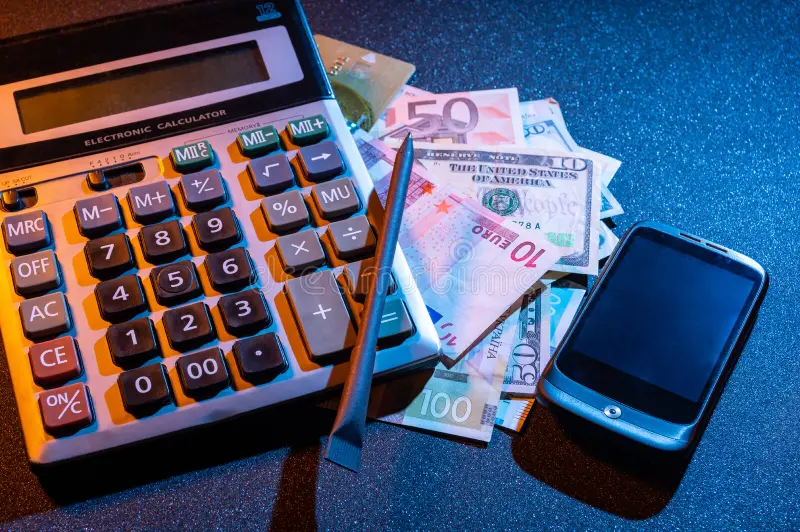Spending calculator: See which prices have gone up or down

Inflation rose unexpectedly in December after falling to a two-year low in November. How has your spending been affected? Use our calculator to see how much your groceries, clothing and leisure activities have increased in cost.
Prices have increased over the past 12 months by 4% on average, putting pressure on already stretched household budgets.
Inflation rose slightly in December, with increases in the price of alcohol and tobacco the biggest contributor. It’s the first time inflation has risen since February.
The price of food was 8% higher than this time last year on average, down from 9.2% in November. Alcohol and tobacco prices are up 12.9% since December 2023, compared with 10.2% in November.
But how much has your individual spending gone up?
Use our calculator to see how much prices are rising on the groceries, clothing and leisure activities you pay for.
Which prices are increasing fastest?
Olive oil costs 46% more than it did last year, with prices for 500ml-1 litre rising from £5.08 to £7.40 in just 12 months. Carrots are up by more than a third, from 55p per kilo to 74p.
Food and drink products are responsible for 18 of the 25 highest increases since last year.
Aside from food, children’s clothing has seen some of the most significant price jumps. As well as infants’ jumpers (22%), girls’ trousers have risen by 23% and tops for girls and boys are up by 17% – almost a fifth – from £10.43 to £12.24 for boys and £9.46 to £11.10 for girls on average.
Top five price rises:
• Olive oil (500ml-1 litre): up 46%, £5.08 to £7.40
• Carrots (per kg): up 35%, 55p to 74p
• Onions (per kg): up 27%, 86p to £1.09
• Hand rolling tobacco pack (30g): up 23%, £17.84 to £22.07
• Girl’s trousers non-denim (5-13yo): up 23%, £9.05 to £11.08
Only 20 of the 152 types of food tracked by the ONS have become cheaper since last year. Many of these were dairy items like milk and butter.
Overall, 69 out of the 442 products in our database are cheaper than they were this time last year.
Top food price decreases:
• Dry spaghetti or pasta (500g): down 14%, £1.09 to 94p
• Spreadable butter (500g): down 11%, £4.45 to £3.97
• Whole milk (4 pints): down 11%, £1.69 to £1.51
• Semi-skimmed milk (2 pints): down 7%, £1.33 to £1.26
• Butter (250g): down 5%, £2.26 to £2.14
Of non-supermarket items, car hire and hair gel have seen some of the biggest falls in price – by 15% and 13% respectively.
Is it more expensive to live a healthy lifestyle?
Alcoholic drinks have gone up by 11%, compared with just 8% for soft drinks.
Fresh vegetables have become 12% more expensive in the last year on average, while fruit is up 6%. The price of uncooked meat has risen by 7%.
What is the effect of long-term inflation?
The price changes described above compare the cost of items to where they were a year ago.
However, inflation has now been at high levels for an extended period of time.
The war in Ukraine, COVID, Brexit, and other supply chain pressures have all contributed to spiralling costs in recent years.
Inflation was 10.5% in December 2022, which was down by 0.7 percentage points from a 40-year high of 11.1% in October 2022.
While the headline inflation figure is finally starting to come down, any amount of inflation means that prices are still rising, and building on already inflated costs.
We’ve compared the costs of shopping items to what they were three years ago to see what the cumulative impact of inflation has been.
The biggest price rise for groceries over that time has been for olive oil (500ml-1 litre) which has more than doubled, from £3.49 to £7.40 in the past three years.
And although the cost of kerosene was one of the biggest price decreases over the past 12 months, looking back over three years it’s had one the biggest increases.
The price more than doubled from £385.05 to £727.16 for 1,000 litres.
Who is worst affected?
Richard Lim, chief executive of Retail Economics, says: “It’s the least affluent households that are going to see much higher rates of inflation as they spend more of their income on food and energy.”
We’ll continue to update our spending calculator over the coming months so you can see how you’ll be affected.
Methodology
The ONS collects these prices by visiting thousands of shops across the country and noting down the prices of specific items. There are upwards of 100,000 prices published every month, from more than 600 products.
The items that form the “official shopping basket” change each year to reflect how the purchasing habits of the population have changed. For example in March 2021, after a year of the pandemic, hand gel, loungewear bottoms and dumbbells were added, while canteen-bought sandwiches were among the items removed.
Where there aren’t the exact equivalent items available at a survey shop, ONS officials pick the best alternative and note that they’ve done this so it’s weighted correctly when the averages are worked out.
Shops are weighted as well, so the price in a major chain supermarket will have a greater impact on the average than an independent corner shop.
We will be updating these figures each month while the cost of living crisis continues.
During the pandemic, more of the survey was carried out over the phone and work is ongoing to digitise the system to be able to take in more price points by getting data from supermarket receipts, rather than making personal visits.



